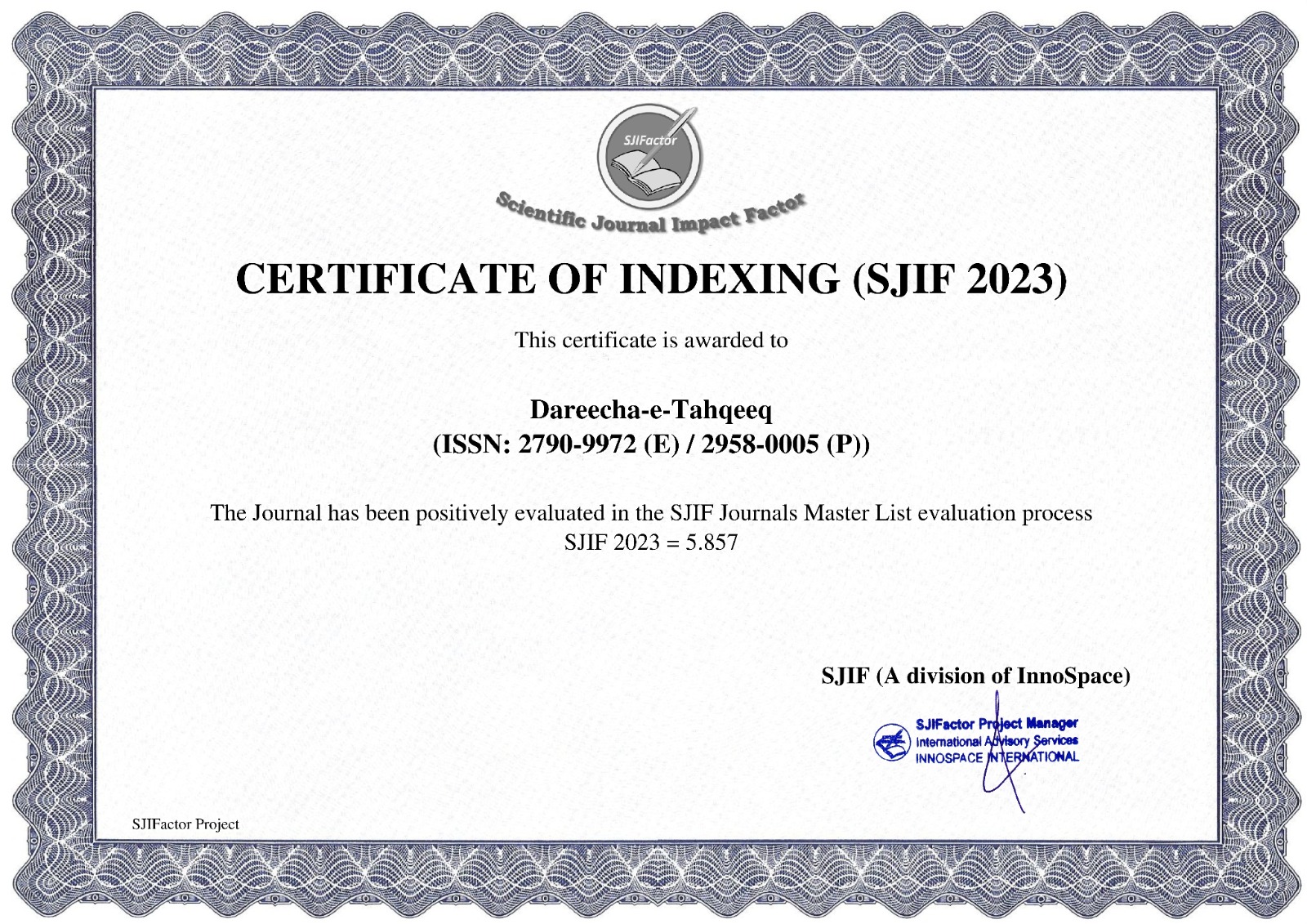Poetic Harmony In Arif Abdul Mateen’s Naa’atya Poetry
DOI:
https://doi.org/10.58760/dareechaetahqeeq.v4i2.113Keywords:
Exemplary Stylistic Naa’at, religious Poetry, Effective Social Services, Universal Harmony, Islamic Revolution,, Heart Touching Dialogue, Powerful Syntax, Humanitarian Problems, Expression of Naa’at,, Communist Revolution, SocialismAbstract
Naa’at is a form of religious poetry that is recited in praise of the Prophet Muhammad (peace be upon him). The word “Naa’at " is derived from the Arabic word "nath," which means "praise. “The content of Naa’ats usually includes descriptions of the Prophet Muhammad's character (seerat), his life, and his teachings. Naa’at can also be used to express the devotion and love that Muslims feel towards the Prophet Muhammad. Arif Abdul Mateen wrote in all forms of poetry and prose but his Naa’at genera have special mental thought process and evolution as a journey from communist thoughts to prospects of religion. He in his Naa’atia poetry, basically initiated a heart touching dialogue with Prophet Muhammad (PBUH) and expected solutions of modern day humanitarian problems from the greatest Reformer and top rank HUMANBEING so he made it a social dialogue rather than mere praise and verbosity. In expression of Naa’at arif’s main focus remained on the philosophical view of developmental, peaceful, progressive and balanced human society as per core Islamic values. His style (Usloob) is having visual and sensory effects embedded with creative, decorated, symbolistic, impressive and articulated treasure of words flavoured with historical imagery. He created Naa’at on the modern poetic norms, which can be seen in each couplet soaked with powerful syntax and images.





















